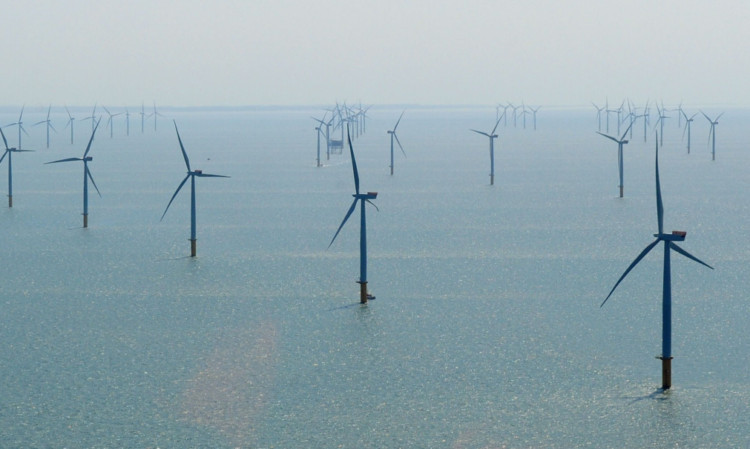Only a fraction of jobs promised by a massive North Sea wind development will go to Scottish workers, it has been claimed.
MSPs Murdo Fraser and Alex Johnstone have turned the spotlight on claims that a 213-turbine development off the Angus coastline will bring masses of local construction opportunities.
According to the firm behind the Inch Cape Offshore Windfarm, the project will create 1,600 jobs for Scots as well as generating as much as three gigawatts of power.
However, the Conservative politicians say initial estimates now don’t match the company’s own assessment and fear as few as 200 temporary jobs could be created anywhere near the communities within view of the huge windfarm.
Inch Cape Offshore Limited (ICOL) has submitted an application for a site of up to 150 square kilometres to Marine Scotland as part of the Crown Estate’s Scottish Territorial Waters licensing programme.
Mr Fraser, the Mid Scotland and Fife MSP, told The Courier he was interested to see “whether the project powers anywhere near 680,000 homes” touted.
He also believes most of the financial benefits will be felt elsewhere.
He added: “The total project cost has been estimated to be in the region of £3 billion, but this will only deliver between 200 and 638 temporary jobs in construction.
“This is a poor return given the huge visual impact to the east coast of such a large project.
“As long as wind turbines are being manufactured abroad, the benefits and jobs will continue to be based out of Scotland.”
Mr Fraser is a proponent of offshore turbines as a more reliable method of energy generation than their dry land cousins, but added that “headline figures” rarely match up with the end product.
The turbines, up to 215 metres high, will be spread across an area of between 10 and 13 miles from the Angus coast.
ICOL is a joint venture company by Spanish energy firms Repsol Nuevas Energias and EDP Renovveis.
Repsol UK’s managing director Ronnie Bonnar said offshore wind power will be “critical to delivering the UK’s energy needs in the coming decades”.
He added: “It represents another major step towards development of offshore wind power in the outer Firth of Tay, delivering opportunities for communities in the surrounding area to benefit from the investment which is expected to deliver around 1,600 Scottish jobs during construction.”
North East Scotland MSP Alex Johnstone said people must be wary of “exaggerated claims” on numbers of jobs any offshore development could create.
In the case of Angus, Dundee and Fife, he said the Inch Cape benefits would be “spread pretty thinly” and the Scottish Government has “so far provided no evidence that these offshore windfarms will provide any local employment whatsoever”.
The Scottish Conservatives’ rural affairs spokesman added: “Notwithstanding the concerns about the efficiency and environmental impact of these windfarms, the debate so far has been undermined by exaggerated claims on the numbers of jobs they create, and the level of transferable skills that go with them.
“We need only look to the controversy surrounding the number of jobs created by onshore windfarms. Last year, the Scottish Government claimed that 18,000 people in Scotland were employed in renewable energy.
“This was later downgraded to 11,000 jobs, of which only 2,000 were employed thanks to windfarms.
“It seems to me that given the sheer scale of this windfarm, the suggested employment benefits are spread pretty thinly, even if we assume they are accurate, and it may be that some areas miss out altogether.
“It is worrying that communities affected by this development can only expect a ‘minor positive’ economic boost from them, and I am not convinced that this will prove to be a fair trade.”
